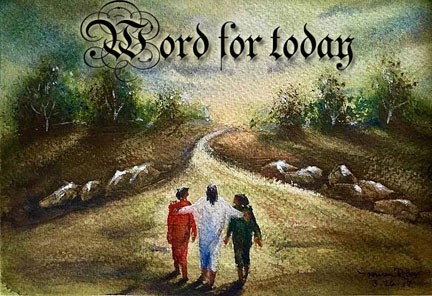Watch
Events
Articles
Market
More
Here's the First Fruits Ministries Bulletin for the upcoming Sabbath on 11/8/2025. Check out a few new and exciting notes: https://firstfruits.cc/blog/20....25/11/06/sabbath-bul



http://CookevilleSocial.com
For people who are in the Cookeville Tennessee area this site is for you. I developed this recently even though there is a lot more to do. It has a directory or you can list your business link or church and ministry links. It has information about the history of Cookeville as well and more is being added to it. I'm also adding information to help you save money and other things. And of course it has its own social media site.



Keeping God's weekly Sabbath takes some discipline, but if it seems like a burden, you're probably doing it wrong.
https://youtube.com/shorts/O-B5GNnOeQo



But Jehosheba, the daughter of King Joram, sister of Ahaziah, took Joash the son of Ahaziah and stole him away from among the king's sons who were being put to death, and she put him and his nurse in a bedroom. Thus they hid him from Athaliah, so that he was not put to death.
2 Kings 11:2
Maybe Jehosheva prayed for guidance (the text doesn't say), but she didn't wait for a sign. She saw a problem and she acted. Sometimes praying and "waiting on the Lord" is just a fear of doing what we know is right.



https://directory.torahtent.com/
You can now add links without registering. I made it mandatory to register to stop spam bots but it made it harder for real people. So I changed this recently.



110625 /14th day of the 8th month 5786
WORD FOR TODAY “do you oppose the ordinance of GOD”: Rom 13:1 Every person is to be in subjection to the governing authorities. For there is no authority except from God, and those which exist are established by God. Rom 13:2 Therefore whoever resists authority has opposed the ordinance of God; and they who have opposed will receive condemnation upon themselves.
WISDOM FOR TODAY: Pro 20:22 Do not say, "I will repay evil"; Wait for the LORD, and He will save you.
Ask the LORD how you can serve HIM better
www.BGMCTV.org




Jonah 1:1 —2, “Now the word of the LORD came to Jonah son of Amittai, saying, “Get up! Go to the great city of Nineveh and preach against it, because its wickedness has come up before Me.”” I would speculate that not everyone in Nineveh was evil, however the majority most likely was. Jonah obviously held a great deal of animosity toward the people there, was he then being prejudiced against all of the people who lived there? Our Creator knew the people would be willing to repent if the right person went to them with the right words. So the question is; are we any different than Jonah when we choose to hate an entire group of people for the wickedness of a few or even the majority of the people in that group?


